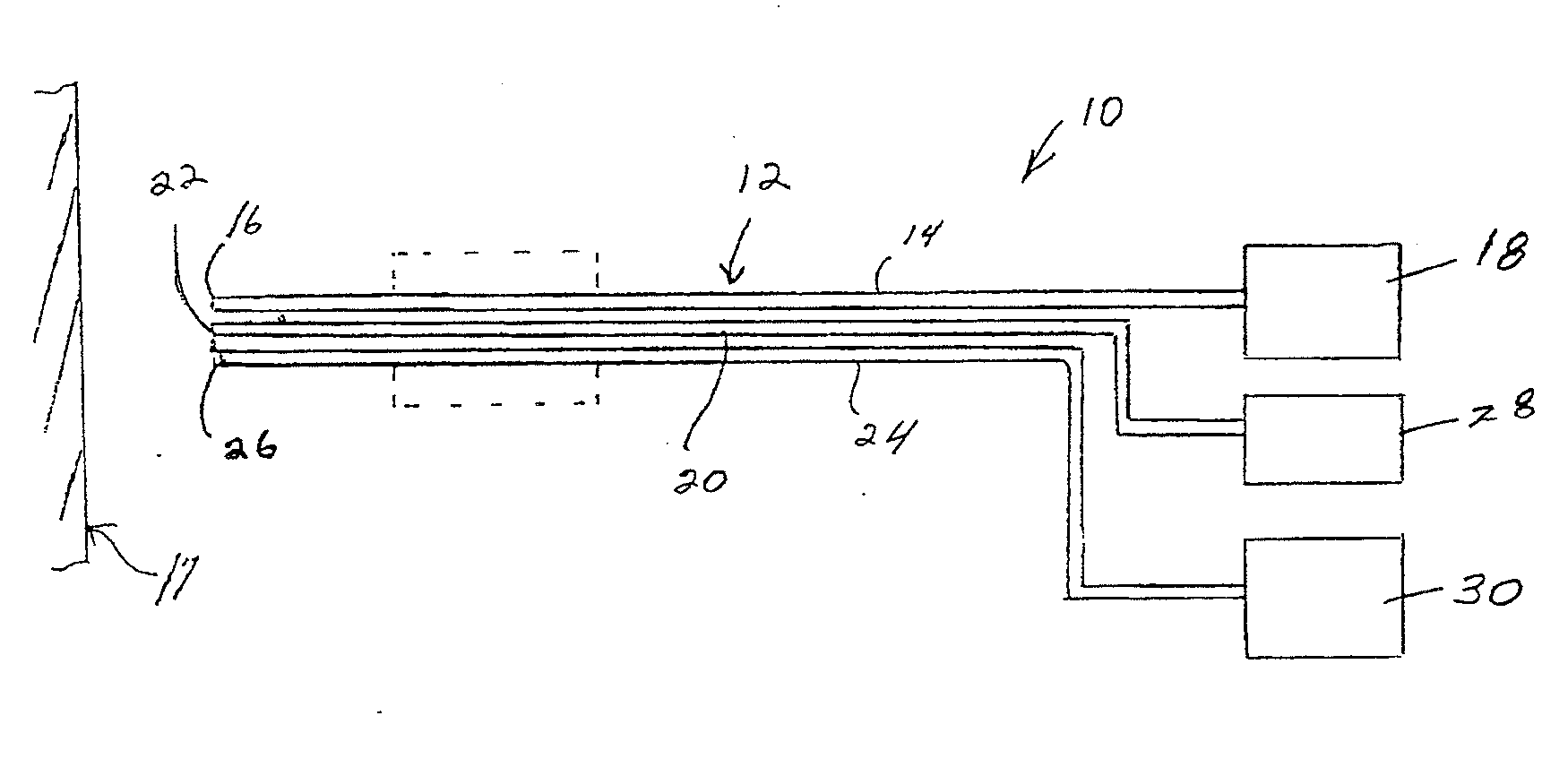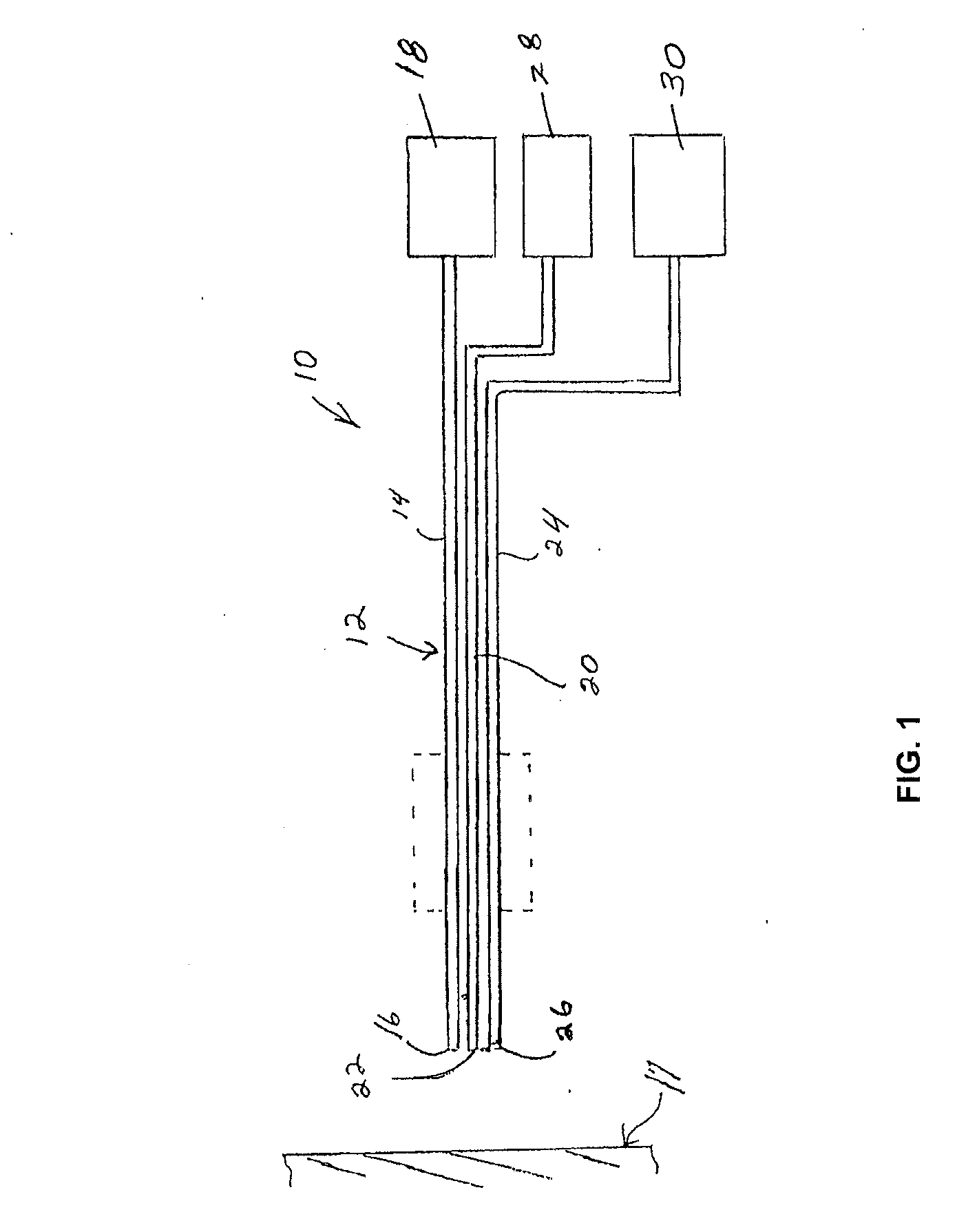Method and composition for hyperthermally treating cells
- Summary
- Abstract
- Description
- Claims
- Application Information
AI Technical Summary
Benefits of technology
Problems solved by technology
Method used
Image
Examples
Embodiment Construction
[0030]The present invention is directed to a method and composition for hyperthermally treating tissue. In particular, the invention is directed to as method for heating tissue above a temperature effective to kill tissue cells or inhibit multiplication of cells below the protein denaturization temperature of the tissue.
[0031]The method of the invention introduces a composition into the bloodstream or other system of the body in a location to flow into or through a target site to be treated. In one embodiment, the composition is introduced into the lymphatic system. A heat source such as generated by radiation energy is applied to the target site to heat the tissue in the target site for a time sufficient to hyperthermally treat the tissue and activate the composition. As used herein, the term “hyperthermal” refers to a temperature of the cell or tissue that kills or damages the cells without protein denaturization.
[0032]The composition contains a temperature indicator that is able ...
PUM
 Login to View More
Login to View More Abstract
Description
Claims
Application Information
 Login to View More
Login to View More - R&D
- Intellectual Property
- Life Sciences
- Materials
- Tech Scout
- Unparalleled Data Quality
- Higher Quality Content
- 60% Fewer Hallucinations
Browse by: Latest US Patents, China's latest patents, Technical Efficacy Thesaurus, Application Domain, Technology Topic, Popular Technical Reports.
© 2025 PatSnap. All rights reserved.Legal|Privacy policy|Modern Slavery Act Transparency Statement|Sitemap|About US| Contact US: help@patsnap.com


